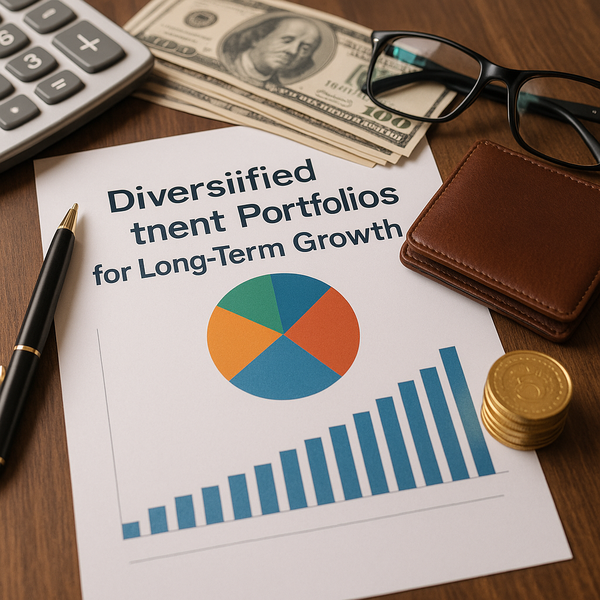
Building a robust financial future often hinges on making smart investment choices. A cornerstone of sound investment strategy is diversification, the practice of spreading investments across various asset classes, industries, and geographies. This approach is not merely a suggestion but a fundamental principle aimed at managing risk while optimizing potential returns in an ever-changing market landscape.
What is Investment Portfolio Diversification?
At its core, investment portfolio diversification is about not putting all your financial eggs in one basket. Imagine investing solely in one company or one sector; if that company or sector faces difficulties, your entire investment could be at significant risk. Diversification seeks to mitigate this risk by allocating investments across different types of assets, such as stocks, bonds, real estate, and potentially alternative investments. It also involves spreading investments geographically (domestic vs. international) and across various industries or sectors (technology, healthcare, finance, energy, etc.). The underlying principle is that different asset classes, sectors, and geographies react differently to economic and market events. When one part of your portfolio might be performing poorly, another part might be performing well, helping to smooth out returns and reduce overall volatility.
Why is Diversification Important?
The primary benefit of diversification is risk management. Specifically, it helps reduce unsystematic risk, which is the risk inherent to a specific company or industry. By owning a variety of assets, the negative impact of poor performance from a single investment is lessened. While diversification cannot eliminate systematic risk (market-wide risks like recessions or interest rate changes), it can help buffer your portfolio against severe losses and reduce the overall variability of returns over time. Furthermore, diversification doesn't just mitigate risk; it can also enhance potential returns. By spreading investments across different asset classes, you increase the probability of participating in various market rallies. Different asset classes perform best at different points in the economic cycle. A well-diversified portfolio is positioned to capture growth opportunities across a wider range of market conditions, potentially leading to more consistent and favorable outcomes in the long term compared to concentrating investments in a few areas.
Different Ways to Diversify
Diversification can be approached in several ways. The most common is through asset class diversification. This involves investing in stocks (equities), bonds (fixed income), cash equivalents, and potentially real estate or commodities. Within stocks, you can diversify by market capitalization (large-cap, mid-cap, small-cap), investment style (growth, value), sector, and geography. For bonds, diversification can involve different types (government, corporate, municipal), credit quality, maturity dates, and geography. Geographic diversification is crucial because economic and political conditions vary greatly around the world. Investing in both domestic and international markets (developed and emerging) can provide exposure to different growth drivers and currencies, further spreading risk. Diversifying across industries or sectors ensures that your portfolio isn't overly exposed to the unique challenges facing a single part of the economy. Time diversification, while slightly different, is also valuable. Practices like dollar-cost averaging, where you invest a fixed amount regularly regardless of market levels, can help reduce the risk of investing a large sum just before a market downturn.
Building a Diversified Portfolio
Building a diversified portfolio begins with asset allocation – determining the mix of different asset classes you will hold. This is one of the most critical decisions, as studies have shown that asset allocation is a primary driver of long-term portfolio returns. Your ideal asset allocation depends heavily on your individual circumstances, including your age, risk tolerance, financial goals, and time horizon. A younger investor with a long time horizon might tolerate more risk and allocate a larger portion to stocks, while an older investor nearing retirement might favor a more conservative allocation with a higher percentage in bonds. Once your initial asset allocation is set, it's crucial to maintain it through rebalancing. Rebalancing involves periodically adjusting your portfolio back to its target allocation. For example, if stocks have performed well and now represent a larger portion of your portfolio than intended, you would sell some stocks and buy other assets like bonds to restore the desired mix. This process helps you avoid letting one asset class dominate your portfolio and ensures you are consistently managing risk according to your plan. Regular portfolio rebalancing is a simple yet powerful discipline.
Common Diversification Mistakes to Avoid
While the concept of diversification is straightforward, investors can make mistakes. One common error is under-diversification, which means not spreading investments widely enough across asset classes, sectors, or geographies. This leaves the portfolio vulnerable to specific risks. On the other hand, it's also possible to over-diversify, holding so many different investments that the benefits of diversification diminish, and tracking the portfolio becomes difficult. Another mistake is confusing diversification with simply owning many different things; true diversification requires owning assets that have low correlation with each other, meaning they don't all move in the same direction at the same time. Chasing performance is another pitfall – selling assets that have performed poorly to buy those that have done well, which can lead to buying high and selling low and disrupt your carefully planned asset allocation. Ignoring investment costs (fees, taxes) is also detrimental, as high costs can erode returns even in a diversified portfolio. Finally, failing to periodically review and rebalance your portfolio means your asset allocation can drift significantly over time, potentially exposing you to unintended levels of risk.
In conclusion, building a diversified investment portfolio is a fundamental practice for anyone serious about long-term financial success. It requires thoughtful asset allocation, regular rebalancing, and a commitment to avoiding common pitfalls like chasing short-term gains. By spreading your investments wisely, you can navigate market uncertainties with greater confidence, mitigate risk, and position yourself for sustainable growth toward your financial goals.

